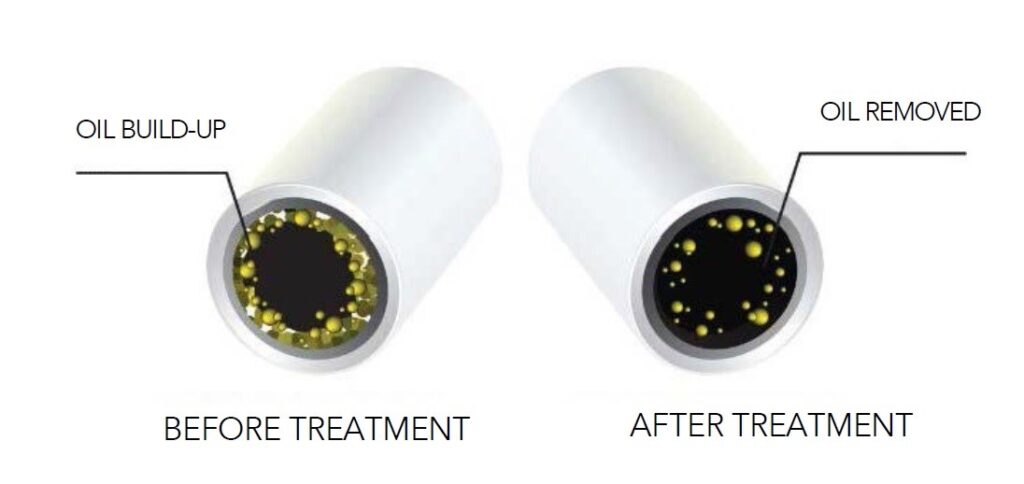Problem
According to ASHRAE, oil-fouling of the heat transfer surfaces in air conditioning and refrigeration systems results in a 7% efficiency loss in the first year, followed by 5% in the second year, and 2% annually thereafter. (1998 ASHRAE Handbook, Refrigeration, Chapter 2.9)
Here’s why. . . As equipment ages, small amounts of the oil used to lubricate the compressor migrate into the system’s heat exchanger coils. This oil-fouling forms a boundary layer that reduces heat transfer efficiency.
Oil-fouling also forces the equipment to work harder which leads to increased repair costs, lower capacity, and premature replacement. Additionally, when equipment runs longer, energy costs rise along with greenhouse gas emissions.
ASHRAE further states that, while mechanical solutions may reduce some problems, even high-tech designs are not efficient enough to remove all unwanted oil in the heat exchanger coils.


With ONE treatment, the problem is solved for good
If oil build-up is like cholesterol in your HVAC/R system’s arteries, ThermaClear® is the cholesterol-clearing pill that makes everything run smoothly again. Better than a pill, you only need to apply ThermaClear® once. A single treatment lasts for the lifespan of your system.

Summary
Oil-fouling is virtually unavoidable and in a very short time, can significantly reduce equipment efficiency, increase energy consumption, decrease system capacity, and increase the likelihood of repairs and premature replacement due to accelerated wear and tear.
To restore efficiency loss resulting from oil-fouling, the oil boundary layer must be removed to increase thermal transfer performance. Until recently, no viable, cost-effective solution has been available to treat oil-fouling.




